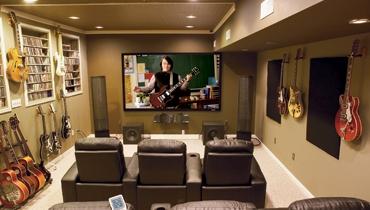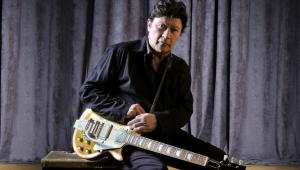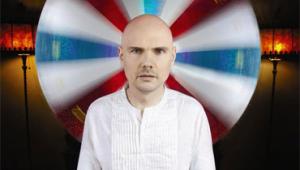The House That Jim Built, Part 3

Has it really been 2 years since I last wrote about my efforts to install the A/V and networking systems in the new addition to my home? (See "The House That Jim Built," June 2006, "The House That Jim Built: Part Two," September 2006, and the Web-exclusive prequel to this story, The Basement Home Theater Jim Built in the House that Jim Built). It's hard to imagine that much time has passed, but despite some dumb mistakes along the way, I have to say I couldn't be happier with the result. When you do a lot of the work yourself, you pick up an incredible amount of knowledge about what goes into building a dedicated home theater - things I never learned from just profiling them for magazines. The previous articles detailed my experiences running wire and installing gear as my wife Lisa and I added a living room and bedroom to our riverfront home 30 miles north of New York City. Stealth, rather than high-end performance, was the priority, as our view of the Hudson River is the real star of these rooms. And with considerable help from Hudson Valley Home Media in nearby Sparkill, NY (among other things, owner Barry Weiner had to rescue me from an electrician's bad low-voltage wiring job), my wife and I successfully met our home-entertainment goals for that part of the house.
But the basement we added at the same time was my chance to go wild - or at last as wild as a man with a toddler, a mortgage, and a limited budget can afford to go. I was determined to transform the basement into a kick-ass home theater, with a small recording studio to boot.

Could this be your basement? Standard concrete floor and walls, exposed HVAC ducts, and three big windows that will have to be addressed.
As you can see in the "before" picture above, building the home theater was a fairly significant DIY project. The room was completely unfinished, with a poured-concrete floor and walls, a large HVAC unit, exposed ductwork, plumbing and electrical lines, and an oddly formed knee-wall that abutted the old basement. While the project took almost 2 years to complete, I spent a lot of time thinking about it, buying the tools I'd need, and doing research. The actual construction lasted about 8 months, since I did most of the work at night and on weekends.
My original plan was to divide the basement in half across the length of the room, creating a space for the theater and another, separate one for the recording studio. I had the basement excavated a foot deeper than usual so I could have 9-foot ceilings; that would give me some leeway for ceiling-mounting a projector, and would also give me enough clearance to install a dropped acoustic-tile ceiling. To handle the room's high-voltage requirements, I had the electrician install a large electrical sub-panel near the central HVAC unit. And since he knew my plans, Barry installed a big enough distribution panel in the old basement's demarcation area to handle all the additional A/V and networking hook-ups I'd need.
IT'S HAMMER TIME
With a plan now firmly in mind, I began construction, starting with the floor. Moisture is always a concern in a basement, and since my guitar collection would be down there, keeping things dry was especially critical. While I could've laid a carpet over a padded vapor barrier directly on the concrete, I instead installed a floating sub-floor using interlocking 2-foot-square DriCore panels, which have raised polyethylene cleats that elevate the panels off the floor, allowing any moisture that might wick up from the concrete to evaporate before reaching the surface.
To help with the framing, I hired a local handyman, Michael Reizenstein (who was also a licensed electrician), and together we framed the room's perimeter walls. Since the concrete knee-wall was well off true, we narrowed the angle to 80 degrees, which made it look more parallel while helping to minimize room resonances that can come with perfectly squared walls. Above the concrete knee-wall, we added three sets of shelves to hold my CDs.

The room during the drywall stage, with a DriCore subfloor, a long soffit hiding the ductwork, and recessed in-ceiling can lights.
To hide the exposed ductwork, pipes, and electrical lines, we built frames for the two large soffits (one shown above). We covered the sides of the frames with 1?2-inch plywood, which added structural rigidity, plus additional mass to help reduce duct noise. We also framed a small room around the HVAC system and electrical sub-panel. Since this would also serve as the equipment room, we made sure it was deep enough to provide easy rear access to all the equipment.
Once the exterior walls were done, I marked the locations for the electrical outlets and switches, and Michael pulled Romex to the locations. Since I was going to use Martin Logan electrostatic speakers plus a pair of powered subwoofers, the room was equipped with more outlets than usual. These included a quad outlet in the ceiling near where I thought the projector would be mounted, and outlets inside the equipment room and several more along the back wall where my studio gear would be.




























































